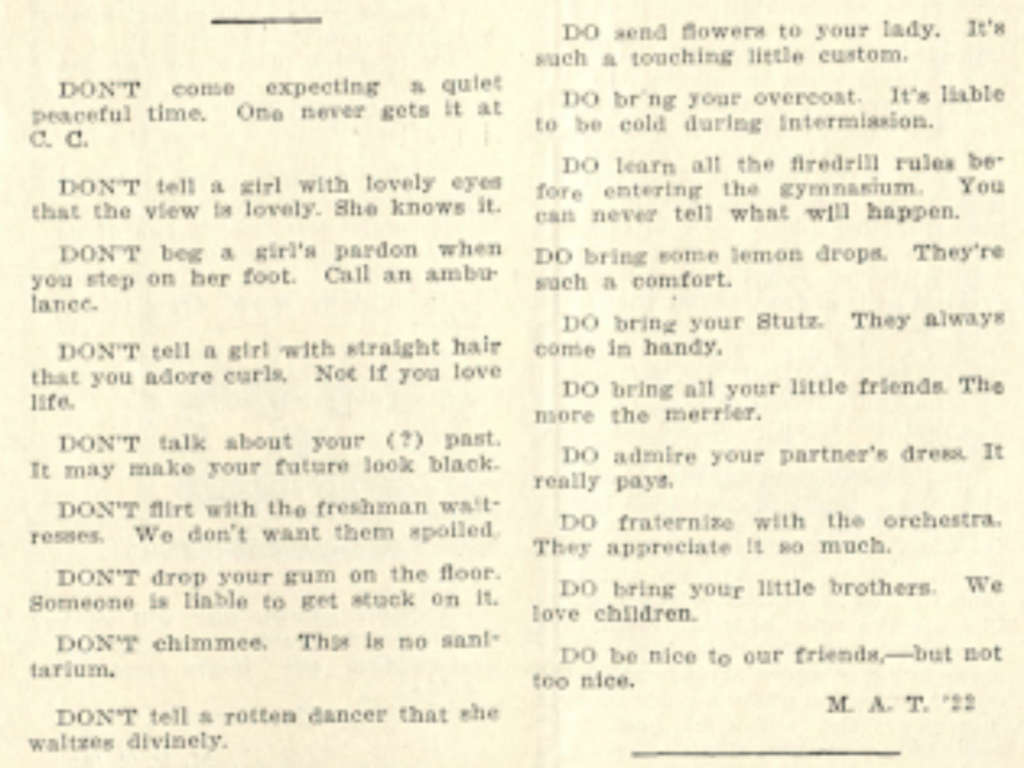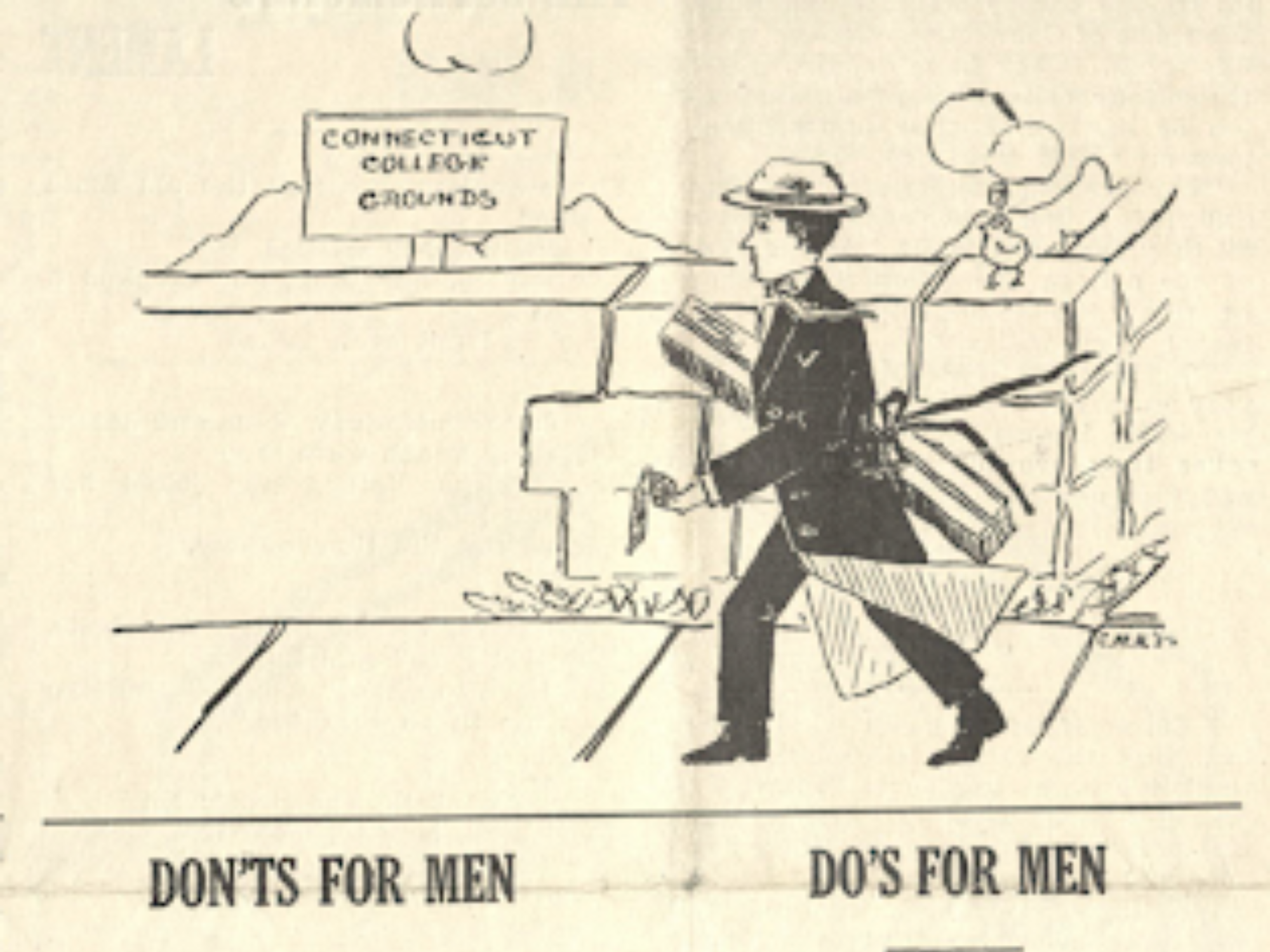Photo courtesy of Lucie Englehardt
Students Polish Shoes to Fund Connecticut College
“Victrolas still continue to pour out their disturbing jazz during the quiet hours of the day,
much to the discomfort of those who desire to study”
– a 1919 student grievance
Last month, I spent some time digging through old copies of The College Voice to see what captured student attention and spirit throughout the past ten years. This month, I got lost in the digital archives of the very first editions of the campus newspaper, dating back to 1915. Connecticut College News – the inaugural nameplate – was, at its core, the foundation of a recently-birthed Connecticut College for Women. The papers back then were short. What began as only a couple pages devoted to goings-on at the College soon blossomed in the 1920’s as a space for student poetry, protest, and more.
When students wanted a gymnasium for “recreation after a day of strenuous mental exercise,” they polished shoes for extra change. And, if anyone mentioned ‘exams’ at the dinner table, one cent went towards the fund. Women reckoned with the division between empirical and emotional thinking, and asked out loud what knowledge provides them in this new place. The Manwaring Building was a hosiery shop in 1921 that specialized in corset-fitting. Colloquially, the campus was “The Hilltop.” There were advertisements for beef roll and olive loaf sandwiches – respectively – at a local deli, and Shakespeare’s tercentenary was a really, really big deal.
In fact, Shakespeare in general was a big deal on campus. In 1918, faculty dressed up as “quaint lords and ladies” for the Twelfth Night banquet that marked the end of “Christmas festivities,” which included a candle-lit boar’s head and royal scepters.
When the toboggan slide was invented and patented in 1923, students took it to the snowy hilltop:
“Cutting wind; merry, stinging flakes; high laughter: the mad slide down – the long, toilsome, walk up with a saucy Flexible Flyer dogging your heels – the girls of C.C. are enjoying their new toboggan slide! We simply revel in it; we dance madly at the top; we screech piercingly on the swift way down; we fall headlong into the most convenient snowbank at the bottom.”
Most articles in the earliest versions of the paper took the shape of a shortened commencement address; in nearly every issue, women made proclamations along the lines of old Girl Scout-esque tunes like, “make new friends, but keep the old; one is silver and the other gold.” Only seven percent of women earned bachelor’s degrees in 1920. This was the first time these women had found themselves in community with other women in a higher-education institution, meaning that much of the newspaper served as a formative and crucial outlet to navigate this uncharted space. Back in the day, the paper promised accountability and conversation.

Photo courtesy of Lucie Englehardt
A solely sophomore-authored special edition issue published a “Do’s and Don’ts for Men” column in 1919:
“DO bring all your little friends. The more, the merrier”
But,
“DON’T come expecting a quiet, peaceful time. One never gets it at C.C.”
Connecticut College was opened in response to Wesleyan University shutting its doors to women in 1912. While revolutionary, this paralleled the logic of America’s suffragist movement at that corresponding historic moment: only white women could be taught at the school. It wasn’t until 1968 that the College set to “include in their student [body] members of social, racial, and economic groups largely unrepresented.” This knowledge doesn’t disqualify the paper from serving as a historical relic, but it does reflect the sensibilities of the time and, as such, serves as a stark reminder that the inaugural spirit of the College was as momentous as it was inequitable. Still, the opportunity to unearth past histories in the realm of student journalism in their original form is gratifying. It is one thing to study the Treaty of Versailles in a textbook that uses the language of our contemporary moment, and quite another to see the 1920 headline before me in the fragile and faded typefaces that endow it with life in an entirely different and special way.









